I like a memorial tournament. It’s true that the champions they celebrate may be less skilled than their modern counterparts. That’s to be expected, as players of today stand upon the shoulders of their predecessors. So I tend to picture the world champions as squabbling gods of myth, made vital by their flaws, and memorial tournaments as temples in their honour. Some characters, like the urbane Capablanca or the charismatic Tal, capture the imagination more readily, but they all have a place, as do the demigods such as Chigorin, Keres or Korchnoi, who never reached the summit but are revered in turn.
Usually a memorial event bears a national significance too, such as the Capablanca Memorial in Cuba, or the Chigorin Memorial in Russia. So I was puzzled by the announcement of the Fide Online Steinitz Memorial, which finished last week. Why Steinitz, for an online international blitz event? It turns out that the dates almost overlapped with the first world champion’s birthday (14th May 1836). More to the point, why not? He led an international life — born in Prague in the Austrian Empire, he studied in Vienna and later lived in London before emigrating to New York and becoming a US citizen.
The top seed for the Steinitz Memorial was the 16th world champion, Magnus Carlsen. The contrasts between them are stark: above all, where Steinitz had a taste for theorising, Carlsen is resolutely pragmatic. Steinitz was given to extensive polemical writing; Carlsen fires off the odd acerbic tweet. Steinitz died a pauper, while Carlsen and his team are commercially astute. But like his predecessor, Carlsen distinguishes himself with his unmatched positional understanding, and abundant self-assurance.
He defeats a strong Vietnamese grandmaster in this game, where 32…g5! is the key move. The position looks sterile, and indeed if White had time to place pawns on f3 and g4, a draw would be very likely. But the lever g7-g5-g4 creates a magnificent outpost on e4 for the knight.
Le Quang Liem–Magnus Carlsen
Fide Online Steinitz Memorial
1 Nf3 d5 2 d4 Nf6 3 c4 e6 4 g3 Bb4+ 5 Nbd2 O-O 6 Bg2 b6 7 O-O Bb7 8 b3 a5 9 Bb2 a4 10 a3 Bxd2 11 Nxd2 axb3 12 Nxb3 Qc8 13 Rc1 dxc4 14 Bxb7 Qxb7 15 Rxc4 Nbd7 16 Qc2 Rfc8 17 Rc1 Ne8 18 a4 h6 19 Nd2 Qa6 20 e3 Ra7 21 Ne4 Rca8 22 h4 Qb7 23 Bc3 Nd6 24 Nxd6 cxd6 25 Be1 d5 26 Rb4 Qa6 27 Qc6 Qe2 28. Kg2 Nf6 29 Qc2 Qxc2 30 Rxc2 Rxa4 31 Rxb6 Ra2 32 Rbc6 (see diagram) 32 …g5! 33 hxg5 hxg5 34 f3 R8a3 35 Bf2 g4 36 fxg4 Nxg4 37 Kf3 Rxc2 38 Rxc2 Nf6 39 g4 Ra1 40 Bg3 Ne4 In a blitz game, White’s defence is miserable. 41 Be5 Kh7 42 Kg2 Kg6 43 Bf4 f6 44 Rb2 Rd1 45 Rc2 Rd3 46 Re2 Nd2 A clever manoeuvre, to facilitate the e6-e5 push. 47 Kf2 Nc4 48 Bg3 48 Ra2! was essential, intending e5 49 dxe5 fxe5 50 Ra6+ to keep Black’s king at bay. 48 …Kg5 The pawn drops, and Black is winning. 49 Kf3 Nd2+ 50 Kg2 Kxg4 51 Bf4 Nc4 52 Kf2 Kf5 53 Kf3 e5 54 dxe5 fxe5 55 Bg3 d4 56 Bf2 Rb3 57 Re1 e4+ 58 Kg2 d3 59 Rc1 d2 60 Rd1 Kg4 White resigns
Got something to add? Join the discussion and comment below.
Get 10 issues for just $10
Subscribe to The Spectator Australia today for the next 10 magazine issues, plus full online access, for just $10.
You might disagree with half of it, but you’ll enjoy reading all of it. Try your first month for free, then just $2 a week for the remainder of your first year.

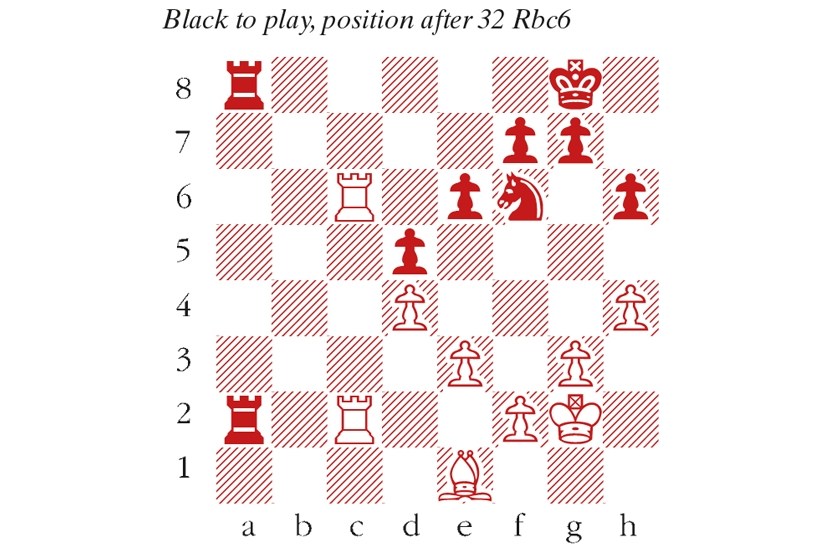

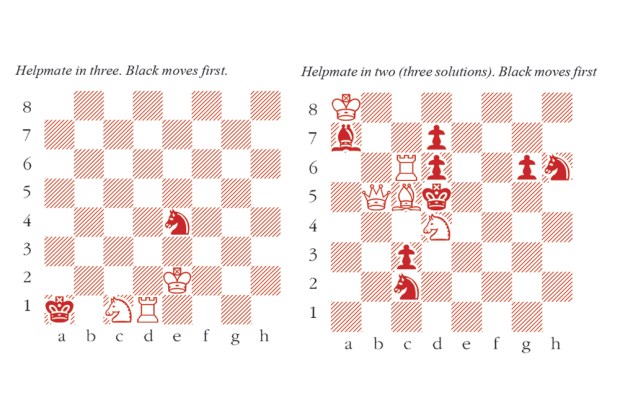
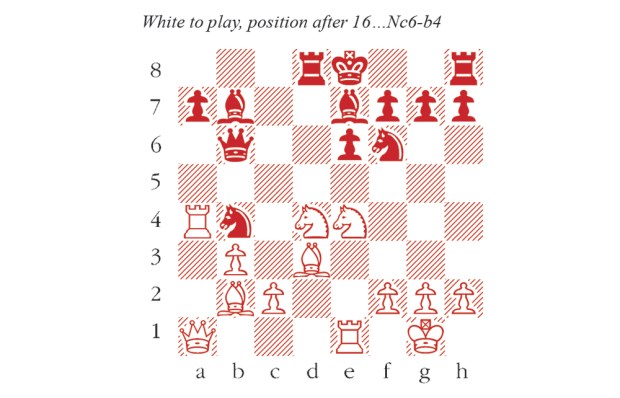
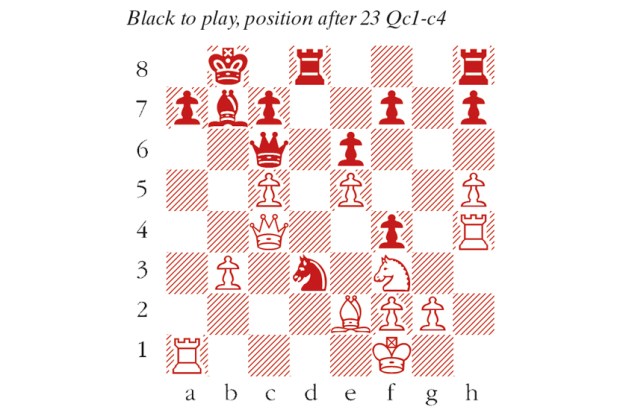
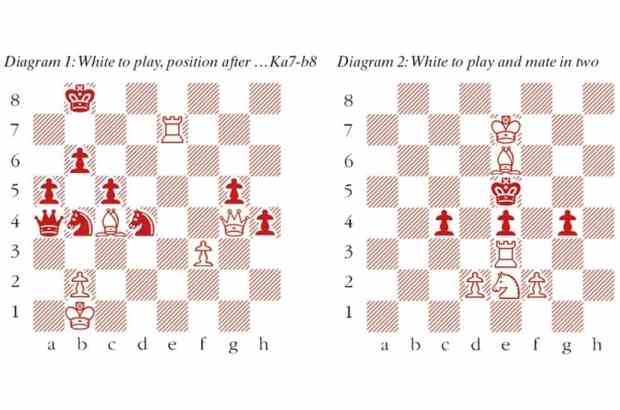
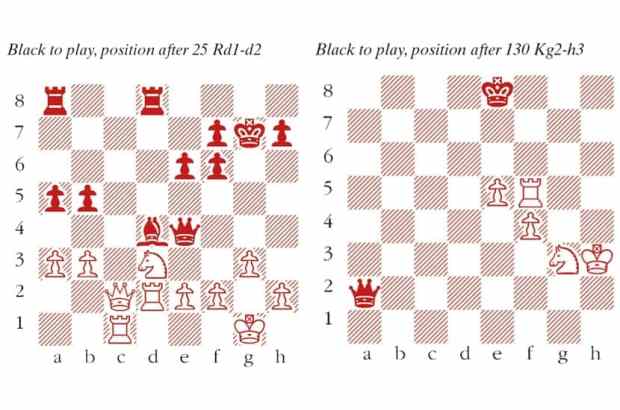






Comments
Don't miss out
Join the conversation with other Spectator Australia readers. Subscribe to leave a comment.
SUBSCRIBEAlready a subscriber? Log in